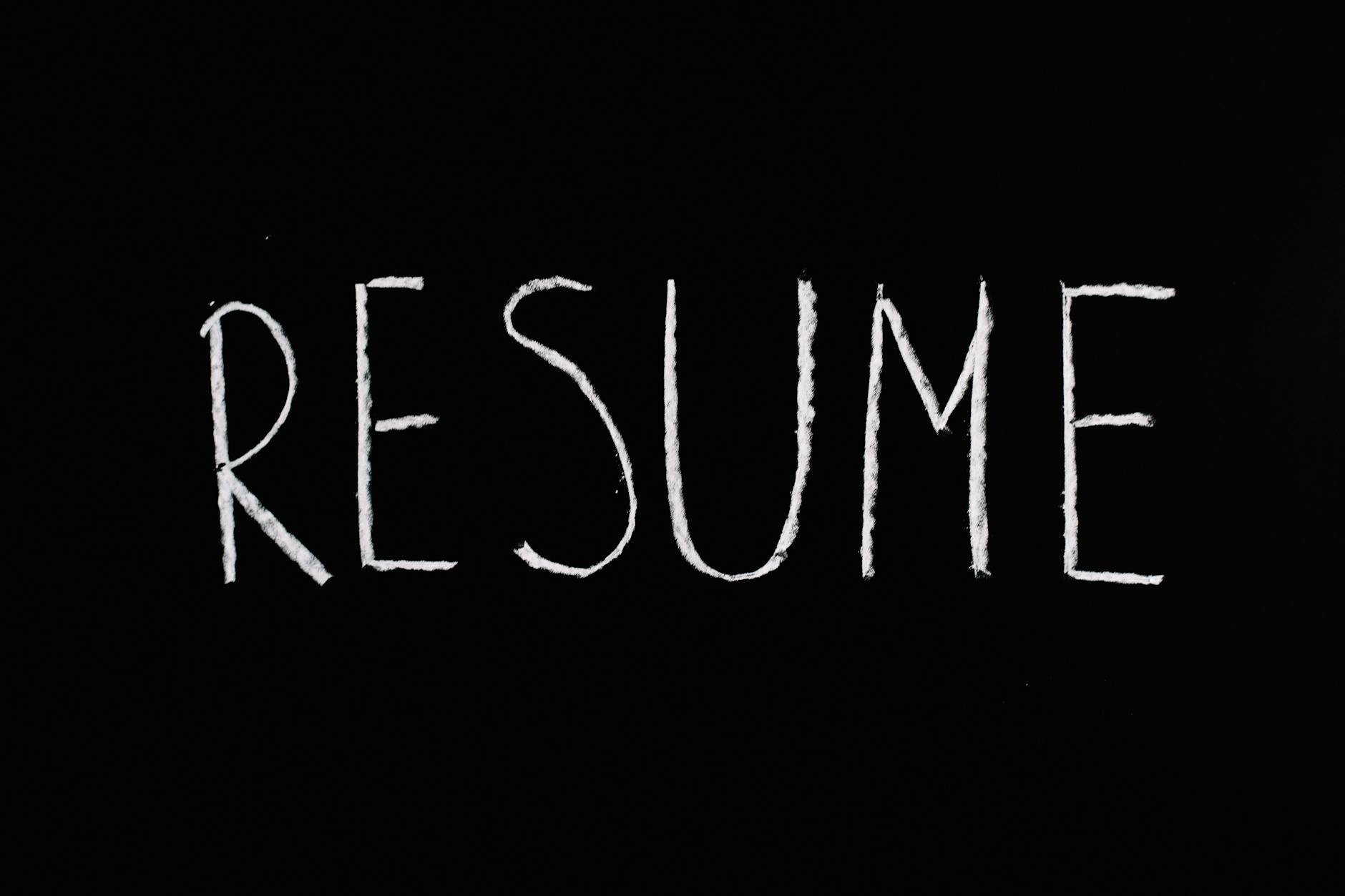Are you looking to refresh your resume without starting from scratch? Sometimes small changes can make a big difference. In this section, we share quick tips on how to write the perfect resume with minimal effort. These ideas will help you polish your document so you stand out in today’s competitive job market.
Review and Refresh Your Content
Begin by reviewing your resume carefully. Look at each section and ask yourself, “Does this clearly show my value?” Remove outdated or irrelevant details. You might have old projects or skills that no longer reflect your expertise. Updating your content makes your resume more current and focused.
Trim any long paragraphs and use clear bullet points. Instead of long sentences, list your achievements in concise, easy-to-read statements. Keep your language simple and direct. Use active verbs to describe your accomplishments. This helps hiring managers quickly understand your impact.
Consider reordering sections if needed. Place the most impressive skills and achievements at the top. You want your resume to grab attention immediately. Remember, the goal is to show how you contribute to a company’s success. Small content tweaks can help you achieve that without a complete overhaul.
Polish Up Your Design
Next, give your resume a visual refresh. A modern design can make your resume more appealing. Use a clean layout with plenty of white space. Avoid clutter by using clear headings and consistent formatting throughout your document.
Select professional fonts like Montserrat, Poppins, or Open Sans. These fonts are easy to read on screens and in print. Use bold and italics sparingly to highlight important sections. A touch of color in headings or borders can add a modern feel without distracting from your content.
If you want to learn how to write the perfect resume, remember that design matters. A well-designed resume can create a positive first impression. Even subtle design improvements can set your resume apart from a stack of plain documents. Consider using a free online template as a starting point and then customize it to reflect your personal brand.
Highlight Your Key Achievements
One of the most effective ways to enhance your resume is by emphasizing your achievements. Instead of listing job responsibilities, focus on measurable results. Quantify your successes with numbers and percentages when possible. For example, “Increased sales by 20%” or “Reduced processing time by 30%.”
This method not only demonstrates your impact but also shows potential employers what you can do for them. Make sure each achievement is tailored to the role you want. Use clear, concise language to convey your accomplishments. This helps you tell a compelling story about your career growth.
Remember, small changes can have a big impact. Even if you only update a few bullet points to highlight your results, your resume becomes much more persuasive. Hiring managers appreciate candidates who can show concrete evidence of their success. This approach sets you apart in a crowded job market.
Boost Your Confidence with Consistent Updates
Keeping your resume fresh is not a one-time task. Regularly update your resume to reflect new skills, experiences, and achievements. Even if you are not actively job hunting, these updates ensure you are always prepared. Over time, consistent improvements build a strong, dynamic resume that evolves with your career.
Set a reminder to review your resume every few months. This habit allows you to capture new accomplishments and adjust to any industry changes. Continuous improvement keeps your resume competitive. By making these small updates, you maintain a document that accurately represents your capabilities and aspirations.
Your resume is a living document that grows with you. It should tell the story of your career in a clear and compelling way. Even if you are not looking for a new job right now, having an optimized resume is essential. It not only boosts your confidence but also ensures that you are ready for any opportunity that comes your way.
Identify Must-Have Keywords to Beat AI Job Screening Tools
In today’s job market, your resume must stand out. AI job screening tools scan your resume for specific keywords. If you want to know how to write the perfect resume, you must choose the right keywords. In this section, we will explore simple steps to identify those must-have keywords. With clear, easy-to-follow tips, you can beat AI screening and boost your chances of landing an interview.
Understand How AI Screening Works
AI screening tools are designed to sort through thousands of resumes quickly. They search for relevant keywords and phrases. These systems help employers save time by filtering out less relevant applications. When you write your resume, you must speak the same language as the AI. By understanding how these tools work, you can tailor your resume to match job postings. It all starts with knowing the requirements. Each job posting has unique demands, and the AI scans your resume for these signals.
For example, if a job posting asks for “project management,” your resume must include that phrase. It is not enough to say “led projects.” AI looks for exact phrases. That is why you need to pay attention to the details. If you want to know how to write the perfect resume, your language must be precise and optimized. You want the AI to notice your skills right away.
Research Essential Keywords for Your Field
The next step is research. You need to review several job listings in your target field. Look for common phrases and terms that appear repeatedly. This will help you identify the must-have keywords for your resume. Use job boards, company websites, and professional networking sites. When you see patterns, note them down. This research gives you a clear guide on what to include.
For example, if you work in digital marketing, terms like “SEO,” “content strategy,” and “data analysis” might be crucial. Read a few job descriptions carefully. Look at the language used by employers. Ask yourself: What words are repeated? What skills are they looking for? With these questions in mind, create a list of essential keywords. This list will be your guide when you update your resume. Remember, you want to know how to write the perfect resume, and this research is your first step.
Incorporate Keywords Naturally into Your Resume
Once you have your list, the next step is to incorporate these keywords naturally. Your resume must flow well and sound authentic. Do not simply stuff your resume with keywords. Instead, weave them into your experience descriptions, skills, and achievements. For example, if “data analysis” is a must-have keyword, mention it in a sentence like, “I improved marketing strategies by using advanced data analysis techniques.” Keep your sentences short and impactful.
Ensure that the keywords fit naturally into your narrative. Your resume should read smoothly for both AI and human eyes. Use bullet points sparingly, and focus on clarity. This step is crucial because if your keywords seem forced, the resume might lose its charm. The goal is to help the AI recognize your value while keeping your resume engaging and informative. You want to know how to write the perfect resume, so every word counts.
Leverage Industry-Specific Language
Another important tip is to use industry-specific language. Every industry has its own jargon and technical terms. When you incorporate these into your resume, you show that you understand the field deeply. For instance, if you are in finance, terms like “ROI,” “cash flow analysis,” or “financial forecasting” might be essential. Not only does this impress the AI, but it also signals to human recruiters that you are well-versed in your industry.
Spend some time researching industry reports, blogs, and articles. Learn the latest trends and incorporate relevant keywords into your resume. This strategy ensures that your resume stays current. You want to know how to write the perfect resume for today’s job market, so keep your language up-to-date and reflective of current industry standards. It also helps bridge the gap between technical skills and real-world experience.
Regularly Update Your Resume Keywords
The job market is dynamic, and so should be your resume. As new technologies and trends emerge, the must-have keywords can change. Set aside time every few months to review and update your resume. Check job postings periodically to see if any new keywords have become popular. This ongoing maintenance helps ensure that your resume remains competitive in an AI-driven screening process.
Consider scheduling a quarterly review of your resume. During these sessions, update your list of keywords and tweak your content accordingly. This habit not only keeps your resume fresh but also demonstrates your commitment to continuous improvement. Employers notice when you keep your skills current, and it gives you an edge. Staying updated is a smart move in a world where AI taking my job is a constant possibility.
Utilize AI Tools for Keyword Optimization
There are many online tools available to help optimize your resume keywords. AI-powered platforms can analyze your resume and compare it with job descriptions. These tools highlight missing keywords and suggest improvements. Using these resources can be an efficient way to refine your resume. They give you actionable feedback and help you ensure that you are using the most relevant terms.
Tools like Jobscan can be incredibly useful. They provide a percentage score indicating how well your resume aligns with a job description. Use this data to adjust your content. This extra step can make a significant difference in your job search success. It’s all part of knowing how to write the perfect resume for a competitive market.
Learn Simple Formatting Tricks to Make Your Resume Stand Out
If you want to know how to write the perfect resume, simple formatting tricks can be your secret weapon. A well-formatted resume not only grabs attention but also makes it easier for recruiters to quickly scan your achievements. With a few small changes, you can transform a plain document into a professional masterpiece that truly reflects your skills.
Create a Clean and Organized Layout
Start by choosing a clean layout with plenty of white space. A clutter-free resume is easier to read and looks more modern. Use clear headings to divide your resume into sections such as Contact Information, Work Experience, Education, and Skills. When you separate sections with clear headings, you help the reader quickly find the information they need. Avoid using too many fonts or colors; stick with two or three complementary choices. For example, use a bold sans-serif for headings and a simple serif or sans-serif for the body text. This simple trick shows you know how to write the perfect resume without overwhelming the reader.
Align your text consistently. Make sure that your bullet points, dates, and job titles line up perfectly. Use a grid system or a template to ensure your margins and spacing are consistent. Consistency in formatting demonstrates professionalism and attention to detail. If your resume appears scattered, it may confuse the reader and hide your true accomplishments. By organizing your content neatly, you invite recruiters to spend more time learning about you.
Use Bullet Points to Highlight Achievements
Bullet points are a powerful tool in resume formatting. They break up long paragraphs and present information in a digestible way. For each job, list your responsibilities and achievements in bullet format. This method makes your successes stand out clearly. Recruiters love bullet points because they quickly show what you have accomplished. Use concise bullet points with action verbs and quantifiable results. For example, “Increased sales by 20%” is more compelling than a vague description.
Keep your bullet points short and to the point. Aim for one or two lines per bullet. This ensures each point is impactful and easy to scan. Bullet points can also help organize technical skills, certifications, and other credentials. If you want to know how to write the perfect resume, using bullet points effectively is a must. They guide the reader’s eyes directly to your key achievements.
Choose the Right Fonts and Colors
Fonts and colors play a crucial role in resume design. Your choices can either enhance or detract from your message. Use professional fonts that are easy to read on both screen and paper. Fonts like Arial, Calibri, or Helvetica work well. Limit yourself to two fonts: one for headings and another for body text. This creates a harmonious look and avoids visual chaos.
Color can add personality to your resume if used sparingly. Consider a subtle accent color for headings or key lines. For example, a muted blue or green can provide a modern touch. Ensure the text color contrasts well with the background. High contrast makes the text more legible. If you are applying in a traditional field, stick to conservative color schemes. On the other hand, creative fields might welcome a pop of color. The idea is to enhance your resume’s overall appearance without distracting from the content.
Leverage White Space for Clarity
White space is often overlooked, yet it is critical for creating an effective resume. Adequate white space makes your resume appear less dense and more inviting to read. It gives the content room to breathe. Use margins generously and space out your paragraphs and bullet points. This strategy improves readability and helps important information stand out.
If your resume feels cramped, it may discourage recruiters from reading every detail. White space guides the reader through your resume in a calm and organized way. By balancing text and empty space, you signal that you value clarity and simplicity. This approach is key when learning how to write the perfect resume. It shows that you pay attention to both the content and the presentation.
Include a Consistent Header and Footer
A consistent header and footer add a polished look to your resume. Use the header to display your name, job title, and contact information. The footer can include a subtle page number or your personal website. A consistent header and footer tie your document together and give it a professional appearance.
This small design element helps your resume feel complete. It also provides a quick reference for the recruiter if they need to contact you. By maintaining consistency throughout the document, you enhance the overall structure and make your resume easier to navigate.
Incorporate Visual Elements Sparingly
While simplicity is key, a few visual elements can enhance your resume. Consider adding simple icons next to section headings or for contact information. Icons should be small and unobtrusive; they must not overpower the text. Their purpose is to guide the reader’s eye and break up the monotony of plain text.
Charts or graphs are generally not recommended unless you are applying for roles that specifically value data visualization skills. However, a simple line or bar graph showing performance metrics might work if it adds value. Use visual elements only when they genuinely support your story. Remember, the focus should always remain on your content and achievements.




